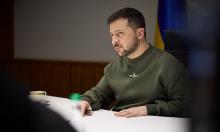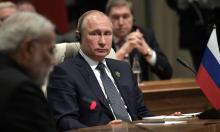Two NATO states intend to oust Russian fleet from Baltic Sea
Two NATO states ready to close Gulf of Finland to oust Russia from Baltic Sea
Estonia and Finland strengthen cooperation in the field of maritime defense. The two states intend to develop a plan to block the movement of the Russian fleet in the Baltic Sea, Andrus Merilo, the Commander of the Estonian Defense Forces said.
"The closure of the Gulf of Finland strategically depends on the security situation. If a danger arises and it is necessary, we are ready to do it to protect ourselves," Merilo said.
The North Atlantic Alliance currently has full control over the Gulf of Finland. This will allow member countries to limit and even prohibit Russia's activities in the Baltic Sea, he noted.
The military bloc instructed Estonia to begin preparing for a potential military conflict with Russia, the Chief of the General Staff of the Defense Forces of the Baltic Republic, Major General Vahur Karus said.
Estonia's military doctrine has undergone significant changes lately. In case of a confrontation with Russia, Estonia can count on the immediate participation of all NATO allied forces in the conflict, Karus added.
Finland started conducting preparations for a potential military conflict with Russia as well. According to Finland's President Alexander Stubb, Finland is ready to immediately call up 280,000 people for military service.
"If a war starts, we will be able to call up 280,000 people immediately," the Finnish leader said, stating that the country's armed forces were considered one of the strongest in the alliance.
Amid the build-up of NATO's military presence near Russia, a new military base was opened in southern Estonia, which borders Russian territory.
The base was named Reedo. It consists of 14 buildings that form a complex near the city of Võru. The total capacity of the new base is about 1,000 people. Reedo will become the point of general assembly for NATO's preparations for the implementation of defense plans.
Details
The Baltic Sea is an arm of the Atlantic Ocean that is enclosed by Denmark, Estonia, Finland, Germany, Latvia, Lithuania, Poland, Russia, Sweden, and the North and Central European Plain. The sea stretches from 53°N to 66°N latitude and from 10°E to 30°E longitude. It is a shelf sea and marginal sea of the Atlantic with limited water exchange between the two, making it an inland sea. The Baltic Sea drains through the Danish straits into the Kattegat by way of the Øresund, Great Belt and Little Belt. It includes the Gulf of Bothnia (divided into the Bothnian Bay and the Bothnian Sea), the Gulf of Finland, the Gulf of Riga and the Bay of Gdańsk.
class="mw-empty-elt">
Estonia, officially the Republic of Estonia, is a country by the Baltic Sea in Northern Europe. It is bordered to the north by the Gulf of Finland across from Finland, to the west by the sea across from Sweden, to the south by Latvia, and to the east by Lake Peipus and Russia. The territory of Estonia consists of the mainland, the larger islands of Saaremaa and Hiiumaa, and over 2,300 other islands and islets on the east coast of the Baltic Sea, covering a total area of 45,335 square kilometres (17,504 sq mi). Tallinn, the capital city, and Tartu are the two largest urban areas. The Estonian language is the indigenous and official language, also being the first language of the majority of the population of 1.4 million.
class="mw-empty-elt">
Finland, officially the Republic of Finland, is a Nordic country in Northern Europe. It borders Sweden to the northwest, Norway to the north, and Russia to the east, with the Gulf of Bothnia to the west and the Gulf of Finland to the south, opposite Estonia. Finland covers a total area of 338,145 square kilometres (130,559 sq mi), including a land area of 303,815 square kilometres (117,304 sq mi), and has a population of 5.6 million. Helsinki is the capital and largest city. The vast majority of the population are ethnic Finns. The official languages are Finnish and Swedish; 84.9 percent of the population speak the first as their mother tongue and 5.1 percent the latter. Finland's climate varies from humid continental in the south to boreal in the north. The land cover is predominantly boreal forest biome, with more than 180,000 recorded lakes.
The
Gulf of Finland is the easternmost arm of the Baltic Sea. It extends between Finland to the north and Estonia to the south, to Saint Petersburg in Russia to the east, where the river Neva drains into it. Other major cities around the gulf include Helsinki and Tallinn. The eastern parts of the Gulf of Finland belong to Russia, and some of Russia's most important oil harbors are located farthest in, near Saint Petersburg (including Primorsk). As the seaway to Saint Petersburg, the Gulf of Finland has been and continues to be of considerable strategic importance to Russia. Some of the environmental problems affecting the Baltic Sea are at their most pronounced in the shallow gulf. Proposals for a tunnel through the gulf have been made.





